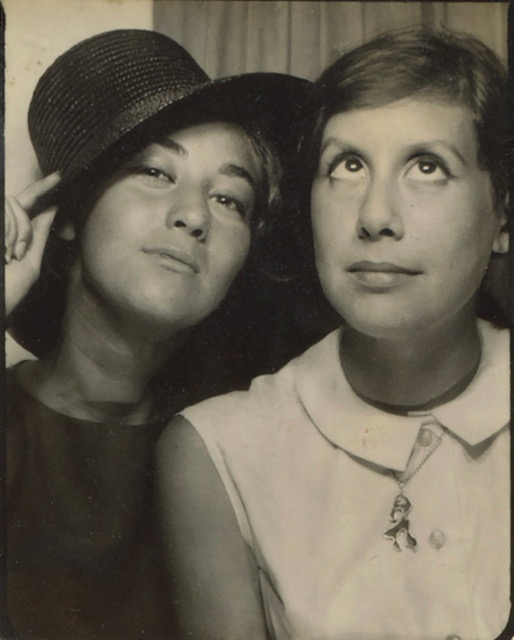When people develop dementia in the United States, we rely on their families to take care of them. And a family member, most often a spouse or a daughter, almost always does step up.
Then, as a culture, we appear to consider the matter solved. But it’s not. Forty-one percent of Alzheimer’s family caregivers get no help from other family members or friends.
And caring for someone with Alzheimer’s is a job too big for one person.
The duration of Alzheimer’s from onset of symptoms to death is between 10 and 20 years. Over that time, the disease gradually causes extensive disabilities, not only problems with thinking, memory and judgment, but also physical disabilities that leave people unable to walk or feed themselves and make them totally dependent. Added to that are behavior changes that can be baffling and challenging to respond to well.
People with dementia often have little awareness of how much their caregiver is doing for them.
A woman I knew had a bowel accident and her daughter was cleaning it up when her mother complained loudly, “Aren’t you going to feed me any lunch today?” It took all of the daughter’s patience and compassion to remember that “she can’t help it; she doesn’t understand,” and not react angrily.
The relationship between care partners inevitably changes as one of them not only grows increasingly dependent but loses the ability to empathize. A caregiver without any help or support is left feeling terribly lonely.
In addition, being the sole caregiver means, after a point, bearing the heavy responsibility for making all the decisions alone about a loved one’s care.
For caregiving spouses, it also means that a myriad of tasks land entirely in their laps, not only the caregiving tasks, but the household responsibilities that used to be shared. Whether it is cooking and laundry or banking and yard work, the well spouse is saddled with all of it now.
How is it that so many caregivers end up doing all this alone?
Here are some examples from families I’ve known in the support groups I lead.
Alice (not her real name) cares for her husband, Dan, alone because their two grown children live on the other side of the continent. Dan’s dementia makes him too anxious to travel, so now their kids come twice a year to visit them. Alice doesn’t use that time for a respite because she wants to visit with the kids too.
This is a second marriage for Jim and Barbara. Jim has Alzheimer’s and Barbara cares for him alone. His children feel no loyalty to her and are mainly interested in keeping an eye on how she spends their father’s money. Her children are still angry with her for marrying him.
Gertie and her two brothers all live close to their parents. Their mother has Alzheimer’s and their father is so frail he’s unable to care for her. The sons feel caregiving is a woman’s task best left to their sister. Their contributions are limited to handling the finances and cutting the grass.
Meg moved in to take care of her mother after she was diagnosed with Alzheimer’s. Meg’s sister lives 100 miles away but feels that their mother already belongs in a nursing home, so she declines to help.
I’ve seen situations like all of these more than once. In some cases, a realistic assessment may lead to the conclusion that trying to deal with a difficult sibling is more stressful than continuing to do the job alone. But other conflicts over caregiving may be amenable to mediation. A qualified mediator, such as a geriatric care manager, can meet with a family and help them divide tasks more equitably. But everyone involved must want this solution to succeed.
If 41 percent of caregivers don’t have any help from a family member, then 59 percent of caregivers do. Typical ways family members pitch in are the following:
- One woman gets a break from caring for her husband when his brother comes every Thursday to keep him company.
- Another woman’s sister takes their mother to stay with her every other weekend.
- Many adult children who work will come help on weekends.
Though these examples don’t match the ideal of everyone in the family sharing the responsibility equally, and they make only a small dent in the overall burden, they are important contributions. Beyond giving the caregiver a break, they mean someone else in the family is involved and can vouch for how difficult the job is. That goes a long way toward easing the loneliness of solo caregiving.
For the person diagnosed with the disease, time spent regularly with other family members is also important, because it widens the circle of secure family love he or she feels. And by staying connected, intermittent family caregivers gain the blessing of knowing their brother, mom or dad is fundamentally the same person despite the losses.
But it still leaves one family member alone with the responsibility most of the time.
Why don’t more caregivers ask friends and neighbors for help? Probably because their American individualism tells them they should be self-sufficient.
Or they’re embarrassed by their family member’s decline. They’re afraid others won’t understand. In effect, they are isolated by the stigma that surrounds Alzheimer’s.
In truth, many friends just drop away. They don’t want to see Alzheimer’s up close.
There are other reasons caregivers remain without help. Some care partners have done so much, solved so many problems, they are reluctant to turn the job over to anyone else because they feel no one else can do it so well. They are exhausted but fail to see how that compromises the care they give.
More often, the reason caregivers don’t get a break is that people with dementia resist any outside help or, for example, refuse to go to an adult day program. They cling fast to what is familiar because their world is feeling less familiar every day. And their family member is their greatest security. (This is reinforced when they have few contacts with others.) They may even fire a hired helper as soon as their spouse or daughter is out of the house.
But every care partner for someone with dementia needs a break from the actual hands-on care, from being in the constant company of a person who is frequently needy and anxious.
Family care is what we as a culture rely on. We idealize family care as what’s best—what every family owes its elders.
Yet, as much as we laud family caregiving, too often we settle for a version of it that amounts to someone in the family doing the whole job, rather than the family doing it together.
My next blog will be about how caregivers can reach out for help and where to find it.
Maggie Sullivan has come to know Alzheimer’s intimately. She was caregiver and advocate during the eight years her mother lived with the disease. For the past 30 years, she has facilitated caregiver support groups for the Alzheimer’s Association, learning from the experience of more than 300 members of those groups. The opinions she expresses here are her own. Maggie is also a writer whose essays and articles have appeared in the New York Times and elsewhere.



